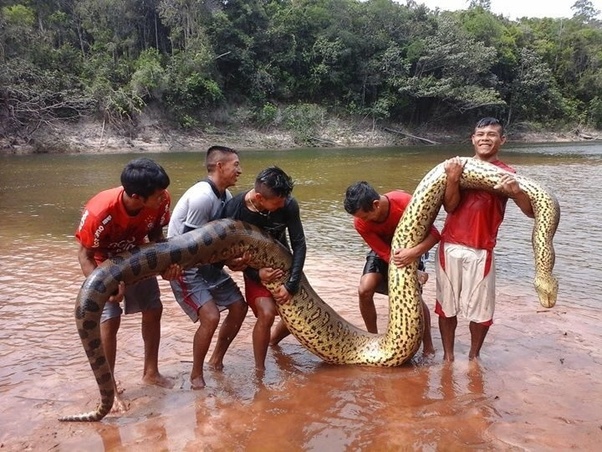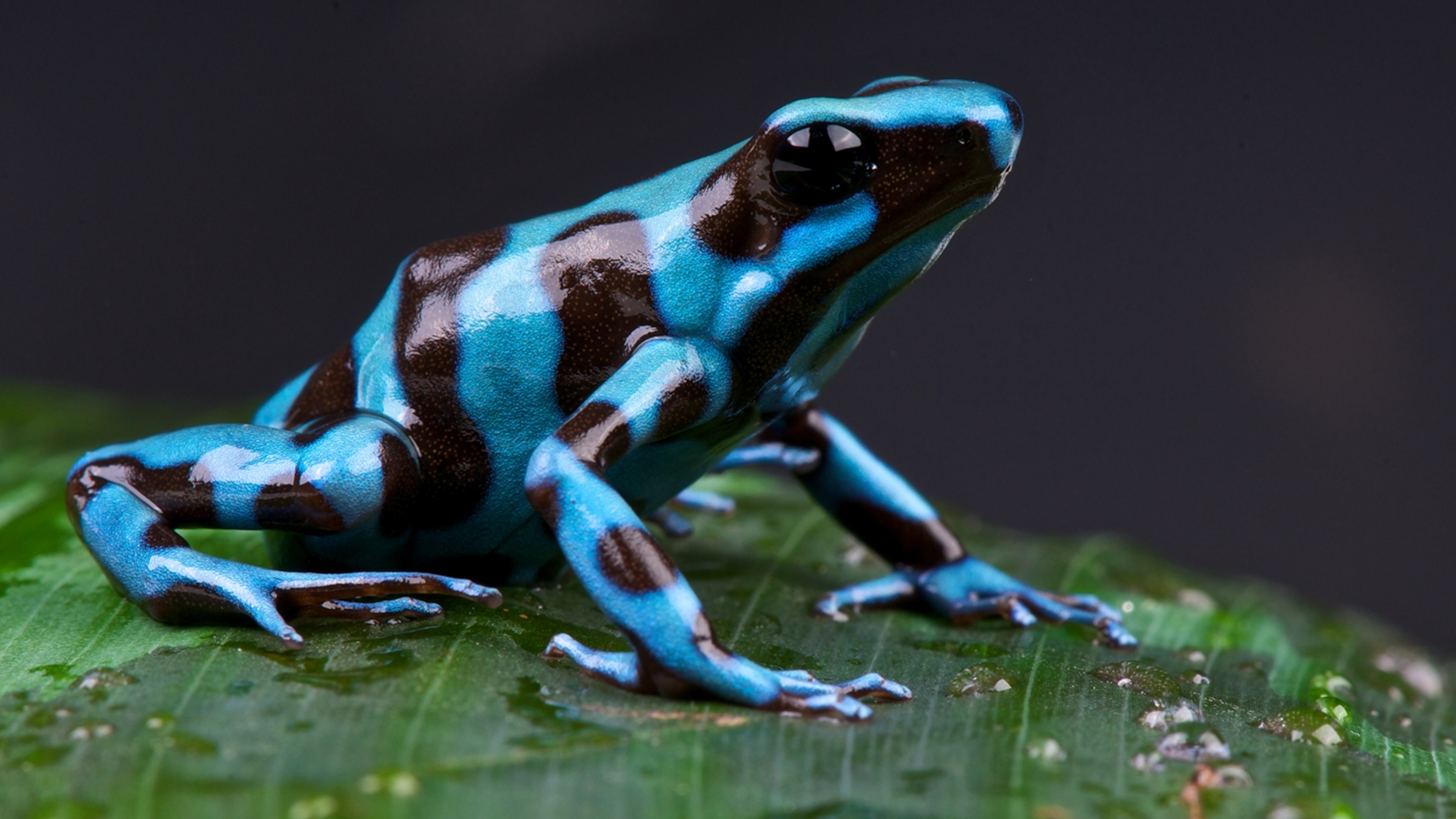This Is Why You Should Never Be Alone In the Amazon
Welcome to the Amazon Rainforest, where danger lurks and powerful predators reign supreme. Join us as we embark on a journey to discover the most fearsome creatures that roam this wildland.
Green Anaconda
The green anaconda is one of the largest snakes in the world, thriving in the swamps, marshes, and slow-moving streams of the Amazon Rainforest. These massive serpents can grow up to 30 feet long and weigh up to 550 pounds. Opportunistic feeders, they consume a wide variety of prey including birds, fish, reptiles, amphibians, and mammals. They are adept ambush predators, capable of staying submerged for up to 10 minutes, with only their eyes and nostrils visible. Though they have attacked humans in the past, it is usually a case of mistaken identity rather than deliberate aggression.
Red-Bellied Piranha
Known for their fearsome reputation, red-bellied piranhas are found in the Amazon, Paraguay, and Essequibo basins. These omnivorous fish consume fish, crustaceans, mollusks, insects, and even vegetation. Despite their fearsome image, they are not the indiscriminate killers portrayed in media. Their diet includes the fins and tails of larger fish rather than preying on other animals indiscriminately. While they have been known to attack humans, they typically do so only if provoked or starving.
Pit Vipers
The Amazon Rainforest is home to various pit viper species, including the South American rattlesnake, the brightly colored eyelash viper, the unpredictable fer-de-lance, and the bushmaster—the world’s longest viper. These snakes possess heat-sensitive pits that allow them to detect prey with precision. Their venom is potent enough to be lethal to humans, making them dangerous to encounter.
Bullet Ant
Bullet ants, despite their small size, are renowned for their excruciatingly painful bite, which is considered the most painful of any insect. Their venom causes pain lasting up to 24 hours, earning them the nickname “24-hour ant.” In some Amazonian tribes, adolescent males endure the pain of bullet ant bites as part of a rite of passage to prove their bravery.
Vampire Bat
Vampire bats are nocturnal creatures that feed on the blood of animals, including cows, pigs, horses, and occasionally humans. Their bites are relatively painless due to enzymes in their saliva that numb the area and prevent blood clotting. Although they do not take large amounts of blood, they are known carriers of rabies, which poses a significant health risk.
Bull Shark
Bull sharks are known for their aggression and are found in the murky freshwater of the Amazon River. Growing up to four meters long, they are territorial and feed on fish, birds, river dolphins, small mammals, and occasionally humans. Their presence in shallow waters where people swim makes them particularly dangerous.
Poison Dart Frog
Poison dart frogs are known for their vibrant colors, which serve as a warning of their potent toxins. Their skin toxins can cause heart failure in minutes if absorbed in large amounts. While over 170 species exist, not all are toxic. The golden poison dart frog is especially dangerous, with enough poison to kill up to 20 humans. In captivity, these frogs lose their toxicity due to differences in diet and environment.
Amazonian Giant Centipede
The Amazonian giant centipede is the largest centipede in the world, reaching up to 12 inches in length. It preys on insects, amphibians, reptiles, and small mammals, and uses its venomous bite to subdue its prey. The bite can cause severe pain, chills, swelling, fever, and fatigue in humans. Despite its fearsome reputation, some people keep these centipedes as pets.
Brazilian Wandering Spider
Also known as the armed spider, the Brazilian wandering spider is highly venomous and considered the world’s most dangerous spider by the Guinness World Records. Its venom can be deadly to humans, particularly children. These spiders do not build webs but roam in search of prey, which includes insects, other spiders, and small amphibians. They are nocturnal and can be found throughout Brazil and parts of Central and South America.
Black Caiman
The black caiman reigns as the apex predator in the Amazon’s waterways. Growing up to over four meters in length, these formidable reptiles prey on fish, other reptiles, and even large mammals like capybaras. Their fearlessness and dominance make them a significant threat to any animal within their range, including other predators. Their power and audacity underscore their role as top predators in their environment.
See you all next time!













